Hydroponics is a method of plant growth that does not require soil and relies on mineral nutrition solutions in water. This technique is used to cultivate plants in a closed environment, such as a greenhouse or inside. In India, hydroponic farming is becoming increasingly popular to produce high-quality fruits and vegetables in a limited space.

Additionally, hydroponic farming can reduce water usage and minimize the use of pesticides and fertilizers. However, it is still a relatively new and developing technology in India and is more expensive than traditional farming. This farming method has been gaining popularity in recent years, as it offers several benefits over traditional farming methods. This blog post will discuss the cost and profit analysis of hydroponic farming in India.
Hydroponic farming cost and profit in India
Introduction to Hydroponics farming in India
Hydroponic farming is a method of plant cultivation without using soil in a nutrient-rich solution. One of the primary benefits of hydroponic farming in India is that it consumes less water than traditional farming methods. It is essential in a country where water is a scarce resource. Hydroponic systems are also more efficient, as they can be designed to supply the exact amount of nutrients that the plants need, reducing the chances of over-fertilization and waste.
Another advantage of hydroponic farming in India is that it allows for year-round crop production, as the controlled environment can be adjusted to provide the ideal growing conditions for the plants. It can lead to higher crop yields and a more consistent product supply. It can benefit farmers who want to grow crops that are not native to the region or have a short growing season. Hydroponic farming in India can also be a more sustainable method of farming.
It reduces the use of chemical pesticides and fertilizers, and it can also reduce the amount of land needed for farming. It can help to preserve the environment and reduce the impact of agriculture on the ecosystem. Despite its many benefits, hydroponic farming in India still faces several challenges. One of the main challenges is the high cost of setting up a hydroponic farm, making it difficult for small farmers and start-ups to enter the market. Another challenge is the lack of knowledge and expertise in hydroponic farming among Indian farmers.
In case you missed it: 20 Key Rules for Setting Up a Budget Hydroponic Garden at Home
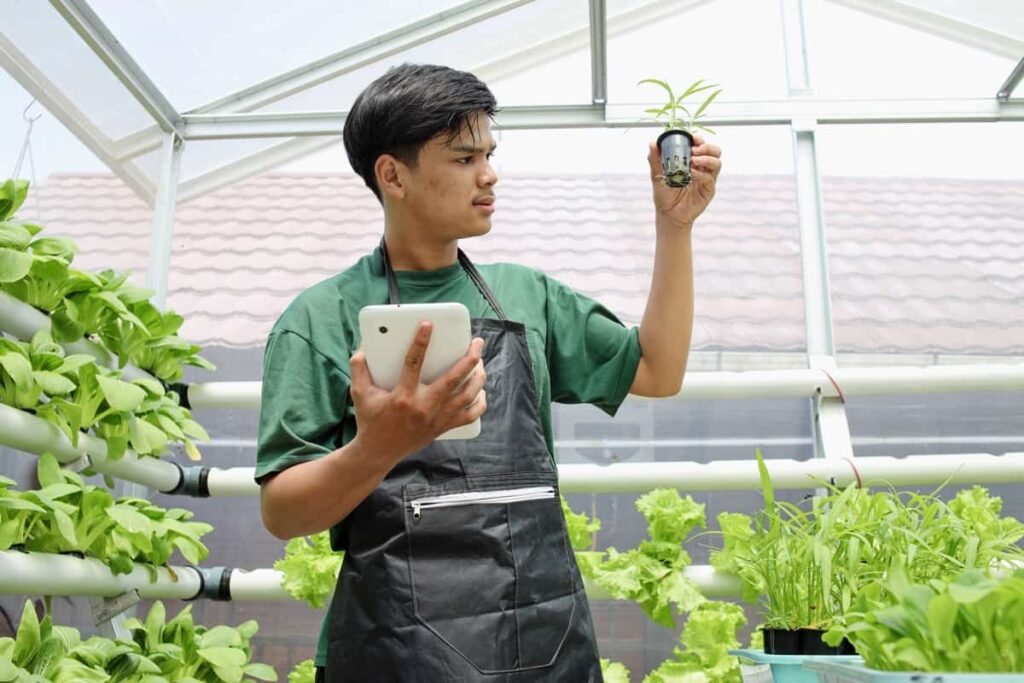
It can lead to difficulties setting up and managing a hydroponic farm and getting the most out of the system. However, with increasing awareness and government support, hydroponic farming in India is becoming more popular. It is expected to grow in the coming years. As technology advances and costs fall, it has the potential to become a profitable and sustainable farming practice in India.
Pros and cons of Hydroponic farming in India
Pros of Hydroponic farming in India
- Increased crop yields: Hydroponic farming allows for year-round crop production and growing plants more closely.
- Reduced water usage: Hydroponic farming uses less water than traditional soil-based farming methods.
- Reduced pesticide use: The controlled environment of a hydroponic farm can reduce the need for pesticides.
- Reduced land usage: Hydroponic farms can be set up in urban areas, reducing the need for large amounts of land for farming.
- Can be grown in any weather: The controlled environment of hydroponic farming allows for plants to grow in any weather condition
Cons of Hydroponic farming in India
- High initial costs: Setting up a hydroponic farm can be expensive, with costs for equipment, infrastructure, and ongoing expenses such as electricity and water.
- Dependence on electricity: Hydroponic farming relies heavily on electricity so power outages may impact farms.
- Lack of experience and knowledge: Hydroponic farming is a relatively new method in India. There may be a need for more experienced farmers and knowledge about how to set up and maintain a hydroponic farm.
- Risk of disease: Hydroponic farming can increase the risk of disease as plants are grown near each other in a controlled environment.
- Limited types of crops: Not all crops can be grown through hydroponics, which may limit the diversity of crops produced.
Equipment and material used in Hydroponic farming in India
The equipment used for hydroponic farming in India will depend on the specific type of hydroponic system used and the crops grown. Some common types of equipment used in hydroponic systems include:
- Grow lights: Hydroponic systems often rely on artificial lighting to provide the energy needed for photosynthesis. It can include high-intensity discharge (HID), fluorescent, or LED lights.
- Nutrient delivery systems: A hydroponic system must provide the plants with the right mix of nutrients, which can be delivered via a drip system, a flood and drain system, or an ebb and flow system.
- Water pumps: Hydroponic systems use water pumps to circulate water and nutrients to the plants.
- pH and nutrient meters: These tools are used to monitor the pH and nutrient levels in the water to ensure that the plants are receiving the right balance of nutrients.
- Climate control equipment: Hydroponic systems often use climate control equipment to maintain the plants’ right temperature and humidity levels.
- Harvesting tools – such as scissors or pruning shears to harvest the plants
- Seedling trays or starter plugs – to germinate the seeds before planting them in the hydroponic system.
- Personal protective equipment: Gloves, goggles, and mask to keep yourself safe from harmful chemicals used in hydroponic farming.
- Sanitation and cleaning materials: Hydroponic systems need to be kept clean and sanitized to prevent the growth of bacteria or fungi that can harm plants.
- Water filtration system: Hydroponic systems require clean water to function properly, so a filtration system is necessary to remove impurities and chlorine from tap water.
- Growing media: This includes the materials that the plants will be grown in, such as clay pebbles, Rockwool, or coco coir.
- Structures: Hydroponic systems can be set up in greenhouses, indoor grow rooms, or warehouses.
In case you missed it: How to Grow Hydroponic Vegetables Indoors: Key Rules, Methods, and Tips
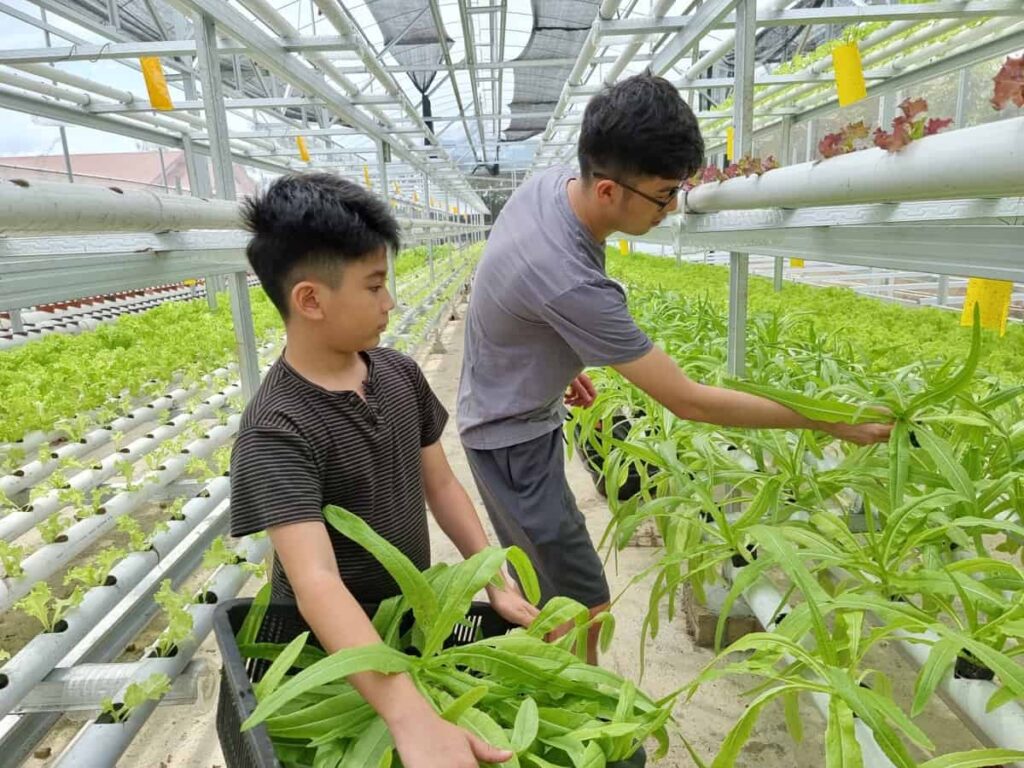
There are different types of hydroponic systems, such as NFT, DWC, Ebb and flow, drip systems, and aeroponics. Each system will have different equipment and infrastructure requirements. Additionally, the specific equipment used may vary depending on the size and scale of the hydroponic farm and the type of crops being grown.
Cost-benefit analysis of Hydroponic farming in India
A cost-benefit analysis of hydroponic farming in India would involve evaluating the costs associated with setting up and maintaining a hydroponic farm and the potential benefits of increased crop yields, reduced water usage, and reduced pesticide use. The costs associated with hydroponic farming include the initial investment in equipment and infrastructure, such as grow lights, nutrient delivery systems, and the physical structure of the farm. Additionally, there are ongoing costs for electricity, water, and nutrients.
The benefits of hydroponic farming include increased crop yields, as plants grown in a controlled environment can be grown year-round and be spaced more closely together. Additionally, hydroponic farming can lead to reduced water usage and reduced pesticide use, as the controlled environment can reduce the need for these inputs. However, cost-benefit analysis typically includes a detailed breakdown of costs and benefits, such as the costs of equipment and infrastructure, ongoing costs for electricity and water, and projected crop yields and revenue.
Components of cost-benefit analysis of Hydroponic farming in India
- Initial costs: This would include the cost of equipment and infrastructure, such as grow lights, nutrient delivery systems, and the physical structure of the farm. It would also include any costs associated with setting up the farm, such as legal and consulting fees.
- Ongoing costs: This would include costs associated with maintaining the farm, such as electricity, water, and nutrient costs. It also includes labor costs.
- Benefits: This would include the potential benefits of hydroponic farming, such as increased crop yields, reduced water usage, and reduced pesticide use. It also includes the revenue generated from crop sales.
- Net present value (NPV) or Internal Rate of Return (IRR): These are financial metrics used to evaluate the profitability of a project. NPV calculates the present value of future project cash flows, and IRR calculates the rate at which the NPV is zero.
- Payback period: This is the time it takes for the investment in a hydroponic farm to be recouped through crop sales.
- Sensitivity analysis: This is used to evaluate the sensitivity of the cost-benefit analysis results to assumptions, such as changes in crop prices or electricity costs.
- Comparison with traditional farming: It is essential to compare the cost and benefits of hydroponic farming with traditional farming methods to evaluate the project’s feasibility.
Cost of setting up a Hydroponic farm
The cost of establishing a hydroponic farm varies greatly depending on its size and scale. The main costs include equipment such as grow lights, nutrient solutions, and water pumps, as well as the cost of building the infrastructure, such as the greenhouse or indoor growing area.
In case you missed it: Farming Business Plan PDF: for Poultry, Livestock, Agriculture, Horticulture, Greenhouse, and Hydroponic
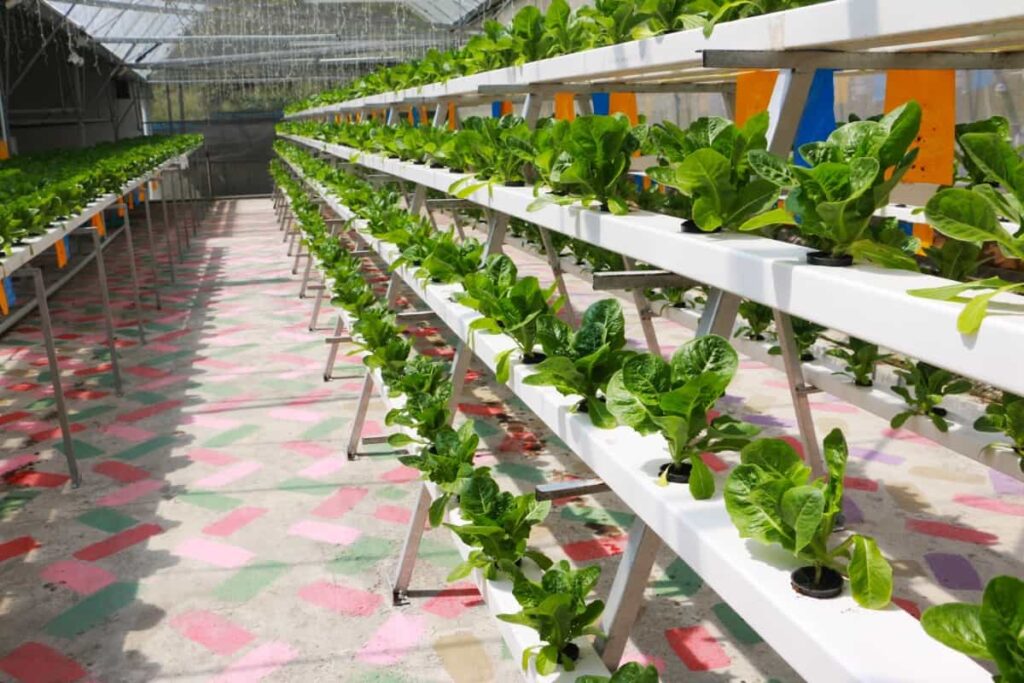
Ongoing costs
Once the hydroponic farm is set up, the ongoing costs include electricity, water, and nutrient solution expenses. The labor cost can also be high, as hydroponic farming requires more frequent monitoring and maintenance than traditional farming methods.
Profitability of Hydroponic farming
The profits from hydroponic farming can be substantial, as it allows for year-round crop production and higher crop yields. The prices of the products are also generally higher than those from traditional farming, as they are considered high quality and chemical-free.
Case 1: Lettuce farming
Small-scale hydroponic farm specializing in growing lettuce using an NFT (Nutrient Film Technique) system, which costs around 2-3 Lakhs. The farm is located in an urban area and covers an area of 1000 sq. ft. The farm employs one full-time worker and produces around 2000 heads of lettuce per month.
Costs of production
| Particulars | Cost in INR |
| Initial Investment | 2-3 Lakhs |
| Utilities | 20,000/month |
| Labour | 20,000/month |
| Seeds/seedlings | 10,000/month |
| Nutrients | 10,000/month |
| Other expenses | 10,000/month |
| Total Costs | 72,000/month |
Revenue
- The selling price of lettuce: INR 30/head
- Total Revenue: INR 60,000/month
- Total Profit: INR 60,000-72,000 = -12,000/month
| Item | Cost/Revenue (In INR) |
| Initial Investment | 2-3 Lakhs |
| Utilities | 20,000/month |
| Labour | 20,000/month |
| Seeds/seedlings | 10,000/month |
| Nutrients | 10,000/month |
| Other expenses | 10,000/month |
| Total Costs | 72,000/month |
| Selling price of lettuce | 30/head |
| Total Revenue | 60,000/month |
| Total Profit | INR 12,000/month |
In case you missed it: How to Maintain the pH Levels of Hydroponic Systems: Increase, Decrease, and Stabilize
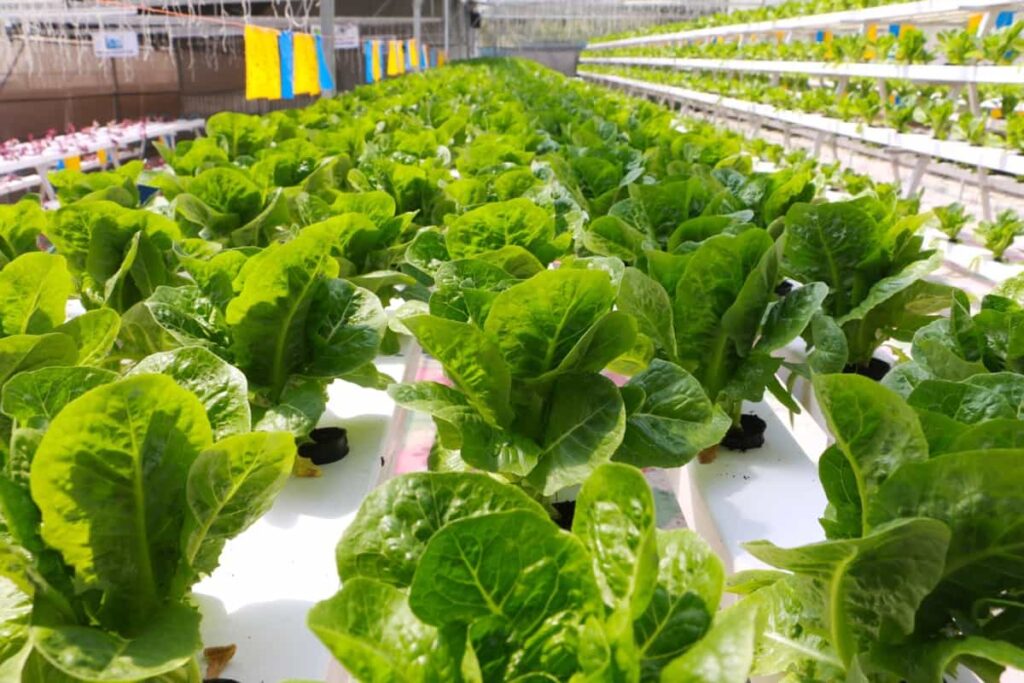
Case: Tomato farming
Estimated costs and profits for a small commercial hydroponic farm growing tomatoes in India
| Expense | Cost (in INR) |
|---|---|
| Initial setup and equipment | 15,00,000 |
| Monthly operating costs (labor, electricity, water, etc.) | 1,50,000 |
| Seeds and growing medium | 50,000 |
| Marketing and distribution | 75,000 |
| Nutrient Solution and Media | 60,000 |
| Harvesting and Package | 45,000 |
| Maintaince and Other Costs | 55,000 |
| Total | 19,35,000 |
| Revenue | Income (in INR) |
| Tomatoes (at INR 20/kg) Avg: 20-30kg per Sq. Meter | 24,45,000 |
This means that a farm with an area of 1,000 square meters can produce around 20,000 to 30,000 kilograms of tomatoes per month. So the Profit = Revenue- Expenses: 24,45,000-19,35,000 = 5,10,000
Challenges in Hydroponic farming in India
Despite its many benefits, hydroponic farming in India still faces several challenges. As mentioned above, one of the main challenges is the high cost of setting up a hydroponic farm. It can make it difficult for small farmers and start-ups to enter the market. Hydroponic farming in India faces several challenges that limit its widespread adoption. One of the main challenges is the high initial cost of setting up a hydroponic farm.
The equipment and infrastructure required for hydroponic farming, such as grow lights, nutrient solution systems, and controlled environment systems, can be costly. Additionally, the cost of maintenance and operation of a hydroponic farm can also be high, making it less accessible to small farmers and those with limited resources. Another challenge is the lack of knowledge and expertise in hydroponic farming among Indian farmers.
While hydroponic farming is a relatively new technology in India, there needs to be more trained and experienced personnel to operate and maintain the farms. It can make it difficult for farmers to get the support and guidance they need to implement hydroponic farming methods successfully. The limited availability of inputs such as seeds and nutrient solutions is also a challenge for hydroponic farming in India.
Due to the small market size, not all hydroponic inputs are available in India. Farmers may have to import them from other countries, which can increase costs. Lastly, the need for more government support and regulations is also a challenge for hydroponic farming in India. With proper regulations, farmers can access funding, subsidies, and other support that would help to make hydroponic farming more viable and sustainable.
In case you missed it: Hydroponic Farming at Home: How to Start, Kit, Cost, Best Plants for Home Hydroponics
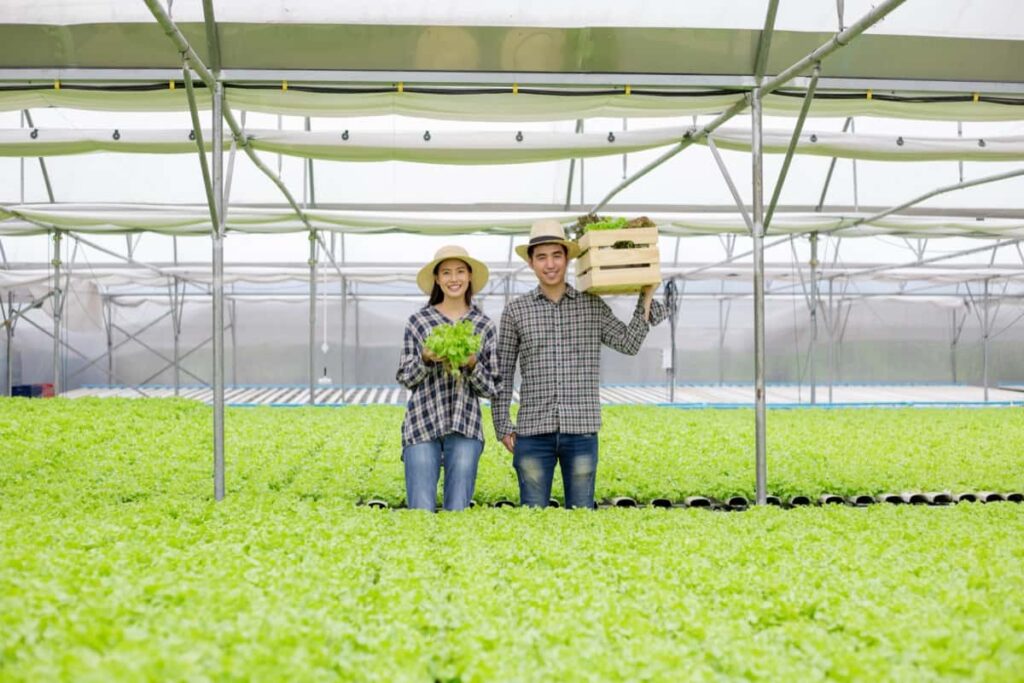
Conclusion
Hydroponic farming in India has the potential to revolutionize the agricultural sector and increase food security. However, it has a far way to go before becoming a widely used farming approach. Addressing the cost and lack of knowledge, the availability of inputs, and government support could help overcome these challenges and make hydroponic farming more accessible to farmers in India.
- Sheep Farming Business Plan for Beginners
- Aquaponic Farming at Home: A Step-By-Step Guide
- Profitable Village Farming Business Ideas in 2024
- High-Yield Aquaculture: Fast-Growing Fish for Farming
- Effective Fish Pond Construction Techniques for Beginners
- Irrigation and Water Management in Pineapple Farming
- Blossom to Harvest: Mastering Flowering and Pollination in Papaya Farming
- Pig Fattening Essentials: From Selection to Sale for Beginners
- Raising Wagyu Cattle: A Complete Guide for Premium Beef Production
- Soil Types and Their Water Holding Capacity
- Optimizing Irrigation Schedules for Coconut Groves for Enhanced Yield
- Espresso Your Garden: Coffee Grounds for Healthier Acid-Loving Plants
- The Best Soil Mix for Snake Plants: How to Mix Your Own Snake Plant Soil
- Green Thumb Success: Expert Tips for Cultivating Greenhouse Beans All Year Round
- Bloom All Year Round: The Ultimate Guide to Indoor Hyacinth Care
- Eco-Friendly Gardening: How to Make Liquid Fertilizer from Kitchen Waste
- Ultimate Guide to Grow Anise in Pots: Explore Seed Propagation to Harvesting
- Guide to Raising Chester White Pigs: Discover Breed Facts to Growth Management
- Mastering the Elegance: The Ultimate Guide to Weeping Cherry Tree Care, Planting, and Maintenance
- Ultimate Guide to Planting Garlic in Grow Bags: Growing Strategies for Beginners
- How to Fix Spider Plant Leaf-Related Problems: Natural and Organic Remedies
- 10 Reasons Why Your Tulsi Plant is Shedding Leaves: Home Remedies and Solutions
- Optimizing Growth and Yield: The Advantages of Palm Bunch Ash Fertilizer
- Utilizing Neem Oil Extract as a Natural Pesticide for Hydrangea
- From Soil to Harvest: Various Ways in Which Farmers Can Use AI Tools
- Steps to Encourage and Induce Citrus Flowers: A Comprehensive Guide
- How to Fix Snake Plant Leaf-Related Issues: Natural and Organic Remedies
- Transform Your Garden into a Fragrant Oasis with Raat Ki Rani (Night Blooming Jasmine)
- Discover the Ideal Chicken Breeds for Philippine Farms
- How to Create a Poultry Egg Farm Business Plan for Profits
- Grow Lemon Cucumbers Like a Pro: Insider Techniques for Bountiful Yields
- Ultimate Guide to Caring for Your Pink Princess Philodendron: Tips for Thriving Variegation
- Areca Nut Profit Per Acre: Calculating Yield and Cost of Cultivation
- How Kaveri Chicken is Becoming a More Profitable Breed in Indian Backyards
- Transform Your Barn: 9 Steps to Convert a Horse Stall into a Chicken Coop
- Exploring Suffolk Sheep Disadvantages with Limitations and Challenges

Hello Jagdish,
Article was very informative. Is it possible to share strawberry crop economics using hydroponics?
Thanks!!
Sridhar
Want to know the viability of starting one in the US
I wanted to know more about farming as I wanted to setup unit in my terrace of 1000 sq.ft.